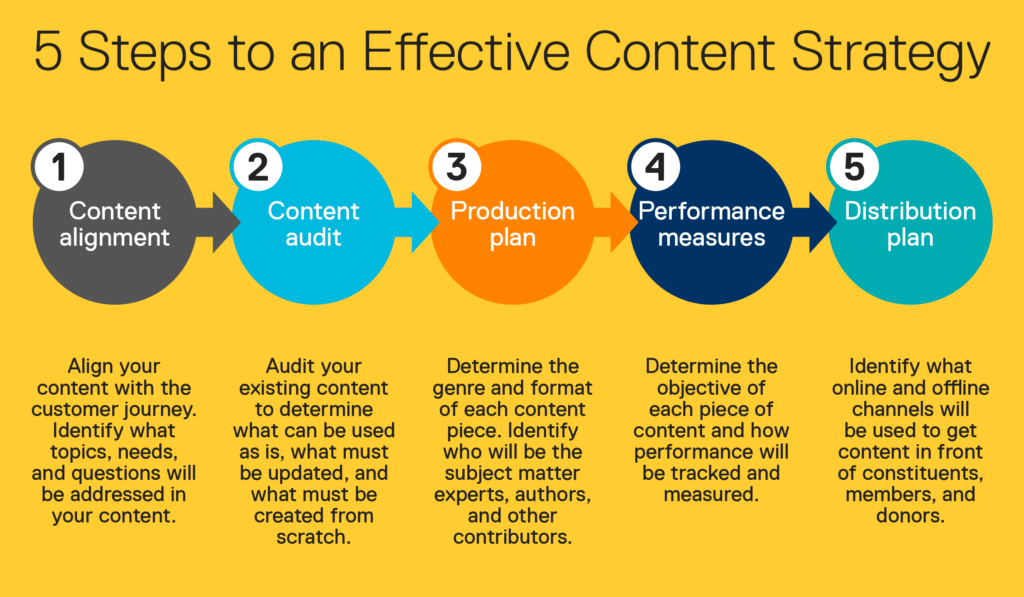What is Content Marketing? Definition
Content marketing is a type of marketing that focuses on creating and distributing valuable, relevant, and consistent content to attract and retain a clearly defined audience, and ultimately, to drive profitable customer action. It is a strategic approach to marketing that aims to educate and inform customers rather than overtly sell to them.
This is not a new concept. Companies have been using content to promote their products and services for years. However, with the rise of digital marketing, content marketing has become more important than ever. Today, content marketing is an essential part of any successful digital marketing strategy.
One of the primary goals of content marketing is to build trust and credibility with potential customers. By providing valuable information and insights, businesses can position themselves as thought leaders and experts in their field. This can help to establish a sense of trust with potential customers, which can make them more likely to do business with the company in the future.

Content marketing can take many different forms, including blog posts, articles, videos, podcasts, infographics, and social media posts. The key is to create content that is informative, entertaining, and valuable to the target audience.
Another important aspect of content marketing is distribution. It is not enough to create great content; it must also be distributed effectively to reach the right audience. This can involve using a variety of channels, including social media, email marketing, SEO, and paid advertising.
One of the main benefits of content marketing is that it can help to attract and retain customers over the long term. Content marketing can also be an effective way to generate leads and sales. By providing valuable information and insights, businesses can attract potential customers who are interested in their products or services. This can help to increase website traffic, boost search engine rankings, and ultimately, drive more sales.
Why is content marketing important?
- Improve brand reputation or, awareness
- To Boost conversions or, Drive organic visitors.
- Create a sense of community around your brand,
- Educate your leads and prospects about the products and services you offer
- Build relationships between your customers and business that result in increased loyalty
- Show your audience how your products and services solve their challenges
- Content marketing helps you set yourself apart from competitors
Now let’s look at the various types of content marketing.
Different Types of Content Marketing:
There are many types of content marketing that you may choose, Here are some of the different types of content marketing (the most common):
Blog posts or Blogging:
Blogging is one of the most popular types of content marketing. A blog can help any online or offline business establish authority, drive traffic to a company website, and engage your target audience or customer.
Anyone with an internet connection and a computer or mobile device can start a blog. Blogging has become increasingly popular over the years due to its accessibility and ease of use. Online blogging platforms such as WordPress, Blogger, and Medium offer free or affordable options for creating and hosting a blog.
Blogging can also be a way to generate income through advertising, sponsorships, or affiliate marketing. However, building a successful blog takes time, effort, and dedication. Blogs can cover a wide range of topics, including but not limited to travel, food, lifestyle, technology, health, and entertainment which are the best ways to sell any product online.
Infographics:
Infographics are visual representations of information, data, or knowledge. They can help communicate complex ideas in a simple and easy-to-understand way. It can be in many forms, from simple pie charts and bar graphs to more complex designs that incorporate icons, illustrations, and photographs. Some common types of infographics include:
- Statistical infographics: These present statistical data in a visual format, such as bar charts, line graphs, and scatter plots.
- Process infographics: These show the steps involved in a process, such as a how-to guide or a workflow diagram.
- Comparison infographics: These compare different sets of data or ideas, such as a pros and cons list or a product comparison chart.
- Informational infographics: These provide information on a specific topic, such as a timeline of historical events or a map of a city.
Infographics are often used in marketing and advertising to help promote products and services, and in journalism to present news stories in a visually engaging way.
Social Media Marketing:
Social media marketing can include a variety of tactics, such as creating and sharing content, engaging with followers, running social media advertising campaigns, and analyzing metrics to track performance and optimize campaigns. One of the most effective ways to help businesses reach a wider audience, build brand awareness, engage with customers and prospects, and drive traffic to their website or online store.
Some popular social media platforms used for marketing include Facebook, Instagram, Twitter, LinkedIn, YouTube, TikTok, and Pinterest. Each platform has its own unique audience and features, so businesses need to understand their target audience and choose the platforms that will best reach them.
Email Marketing:
Email marketing involves sending targeted messages to a list of subscribers. Emails can be used to promote products or services, provide valuable insights, and establish relationships with your subscribers, or with potential and current customers.
To create an effective email marketing campaign, it is important to segment your email list, personalize your emails, create compelling subject lines, and use a clear and concise call to action (CTA). However, it is important to balance the frequency and relevance of your emails to avoid overwhelming or annoying your subscribers.
Conclusion:
Content marketing is a strategic approach to marketing that involves creating and distributing valuable, relevant, and consistent content to attract and retain a clearly defined audience.
It is an essential part of any successful digital marketing strategy and can help businesses to build trust and credibility with potential customers, generate leads and sales, and establish themselves as thought leaders and experts in their field. While it does require effort and investment, content marketing can be highly effective in driving long-term growth and success for businesses of all sizes.


![Native Advertising Networks for Publishers [Top 5] best-native-ad-networks](https://bytizenotes.com/wp-content/uploads/2019/01/best-native-ad-networks-198x145.png)


![[Top 10] Best ways to Earn Money Online 2023 popular ways to earn online money](https://bytizenotes.com/wp-content/uploads/2023/02/make-money-online-100x70.png)
